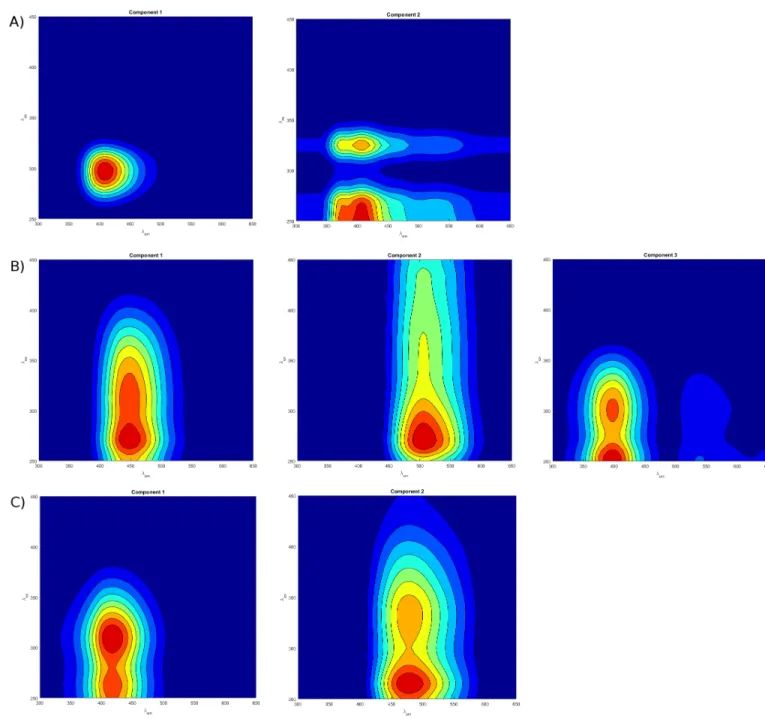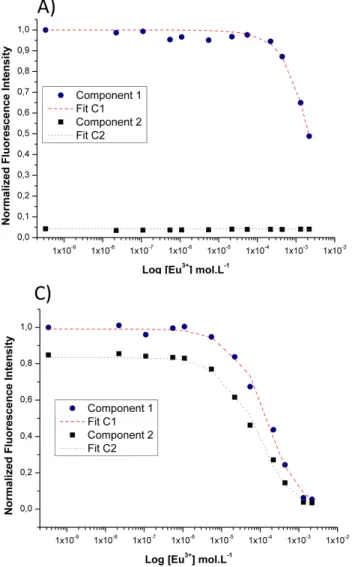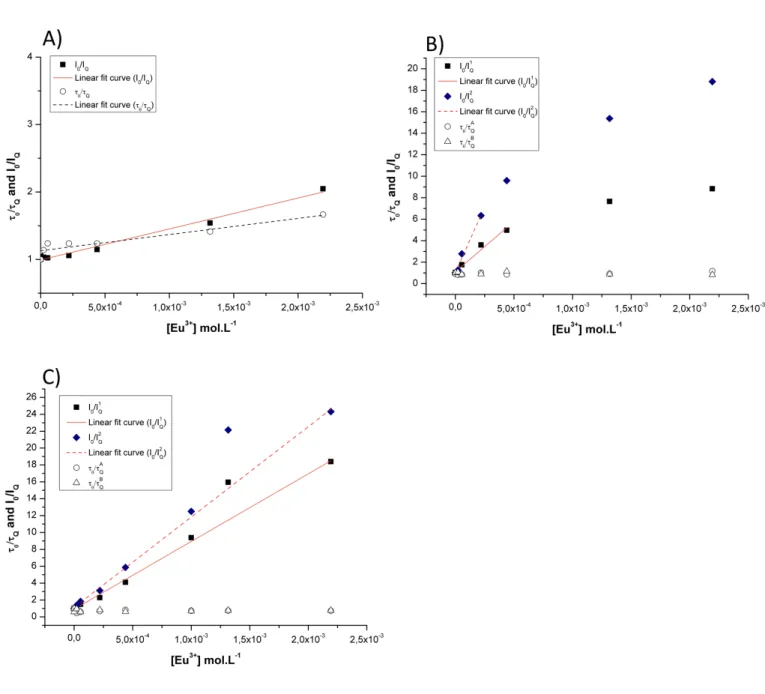Time-resolved laser fluorescence spectroscopy of organic ligands by europium: Fluorescence quenching and lifetime properties
Texte intégral
Figure




Documents relatifs
The investigation o f metastable alloys arose rapidly growing interest during the last decade because of the remarkable electrical, mechani- cal and superconducting
Also, the control of the silica thickness allows optimizing the distance between the metallic surface and the fluorophore in order to enhance of the fluorescence signal [19]..
L’archive ouverte pluridisciplinaire HAL, est destinée au dépôt et à la diffusion de documents scientifiques de niveau recherche, publiés ou non, émanant des
Table 1: Pigment composition of dark-adapted CL and IL cells grown under an intensity of 40 µmol photons.m -2 .s -1 , and of corresponding sucrose gradient fractions
An explanation for the inter-species variability of the photopro- tective non-photochemical chlorophyll fluorescence quenching in diatoms... An explanation for the inter-species
lower light conditions, NPQ light-response curves of samples acclimated to high light showed 340. higher values of NPQ m (Bilger and Bjorkman 1990; Burritt and MacKenzie 2003;
This electrochemical method is compared to the traditional chemical dithionite quenching of NBD and tested to monitor the internalization of Cell Penetrating Peptides in